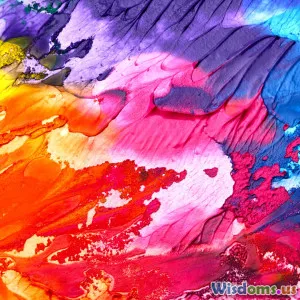
The Surprising Power of Visuals in Audience Targeting
8 min read Discover how visuals transform audience targeting strategies, enhancing engagement and conversion through powerful imagery and data-driven design. (0 Reviews)
The Surprising Power of Visuals in Audience Targeting
In today's digital landscape where attention spans are fleeting, connecting meaningfully with your audience requires more than just words or statistics—it demands the strategic use of visuals. Whether it’s a compelling image, an engaging video, or a thoughtfully designed infographic, visuals infiltrate our cognitive processes far more deeply than text alone. But when it comes to targeting audiences in marketing and communication, how powerful can visuals really be? This article unpacks the surprising role visuals play in audience targeting, elucidating how they shape perceptions, facilitate engagement, and ultimately drive action.
Why Visuals Matter More Than Ever
The Science Behind Visual Processing
Human brains are wired for visuals: studies suggest that we process visuals 60,000 times faster than text (3M Corporation). Approximately 90% of the information transmitted to our brains is visual, making imagery a natural communication tool.
This neurological edge means visuals help audiences quickly grasp the message without cognitive overload. They reduce the time to comprehension—a critical advantage when marketers have just seconds to capture attention.
Visuals Drive Emotional Connection
Emotion is a key driver in decision-making. Psychologist Paul Ekman’s research on facial expressions shows visuals evoke empathetic responses instantly. An authentic photograph that portrays relatable emotions converts better than dry text because it fosters a human connection.
For example, charity campaigns employing photos that highlight human stories rather than mere data statistics have consistently raised more funds. Visual storytelling taps into viewers’ empathy, mobilizing them more effectively.
Visuals as Strategic Tools in Audience Targeting
Leveraging Visual Demographics for Precision Targeting
Modern audience targeting thrives on data—age, gender, location, behavioral habits—all can inform which visuals resonate most. Platforms like Facebook and Instagram allow advertisers to tailor images based on these demographics.
For instance, a study by HubSpot found that personalized visuals aligned with audience interests boosted click-through rates by up to 42%. A brand targeting millennials might use dynamic, colorful imagery or memes, while a brand targeting professionals might prefer minimalistic, clean designs.
Cultural Sensitivity Through Visuals
Global brands face the challenge of cultural diversity. Imagery must reflect respect and understanding of local norms to avoid alienation.
Take Coca-Cola’s campaigns: their localized visuals vary to fit regional taste, celebrating local festivals and values, ensuring their marketing locally resonates while maintaining brand identity. Incorporating culturally relevant visuals helps target audiences feel seen and valued.
Visual Formats That Amplify Targeting Effectiveness
Different formats serve different audience targeting goals:
-
Infographics: Perfect for simplifying complex information, popular in B2B and educational content.
-
Videos: Drive higher engagement on social platforms; a recent Cisco report states video traffic will account for 82% of all consumer internet traffic by 2024.
-
User-Generated Content (UGC): These provide authenticity, fostering trust and community among targeted audiences.
Marketers analyzing behavior metrics can optimize which visual formats maximize impact.
Real-World Insights: Brands Harnessing Visuals in Audience Targeting
Airbnb: Immersive Visual Narratives
Airbnb uses user-generated photos and videos reflecting real experiences in diverse settings, balancing aspirational imagery with authenticity. This strategy appeals to varied traveler demographics, allowing audiences to visualize themselves within the spaces vividly.
Their emphasis on storytelling visuals, combined with demographic targeting, led to a significant increase in bookings. This shows the power of visual relatability.
Nike: Emotional and Motivational Visuals
Nike’s “Just Do It” campaign paralleled powerful athlete visuals with inspiring narratives, targeting sports enthusiasts across cultures and ages. Their visuals don’t just show products; they capture grit, aspiration, and triumph, aligning deeply with audience identity.
Winning an Olympic audience’s attention requires more than product features—Nike’s visuals evoke shared values and dreams.
Spotify Wrapped: Personalized Visual Data
Spotify’s yearly “Wrapped” campaign turns user data into vibrant, personalized graphics and videos. This visualized information creates excitement, encouraging sharing and increasing user engagement.
Harnessing visuals tied to personal data heightens relevance and creates memorable experiences—core goals of targeted marketing.
Best Practices for Using Visuals in Audience Targeting
Conduct Audience Visual Preference Research
Don’t guess which images resonate. Use surveys, focus groups, and A/B testing to uncover what styles, colors, and formats your audience responds to.
Align Visuals with Brand Voice and Audience Expectations
Consistency matters. Your visuals should reinforce your brand identity and tone while tailored to specific segments.
For example, an eco-friendly brand using nature-inspired palettes and serene imagery connects better with environmentally conscious audiences.
Optimize Visuals for Platforms and Devices
Scaling across mobile, desktop, and different social platforms means adapting image sizes, layouts, and lengths. Optimize load speeds and accessibility (alt-text) to ensure your visuals perform.
Use Data Analytics to Refine Visual Strategy
Leverage analytics tools to track engagement rates, scroll behavior, and conversion metrics linked to visuals. Adjust strategies accordingly to make targeting smarter and visuals more impactful.
Future of Visuals in Audience Targeting
As AI-driven personalization grows, visuals will become dynamically tailored to individual users based on behavioral and contextual data. Imagine websites or ads generating custom images in real time based on a user’s mood or location.
Furthermore, augmented reality (AR) and virtual reality (VR) will deepen immersive visual experiences, revolutionizing how brands connect digitally with their target audiences.
Conclusion
The surprising power of visuals in audience targeting lies in their versatility and depth—they transcend language, evoke emotion, and simplify complex narratives. By fusing neuroscience insights, cultural awareness, and data-driven strategies, visuals become indispensable tools for marketers seeking meaningful engagement.
In a world saturated with information, how you capture and hold attention defines success. Visuals are not just supportive elements but strategic pillars that elevate audience targeting to new heights. Brands embracing this visual evolution will find themselves forging stronger connections and driving lasting impact.
Embrace the surprising power of visuals—your audience is already seeing through their eyes.
References:
- 3M Corporation Visual Information Processing Study
- HubSpot: The Effectiveness of Personalized Visual Content
- Cisco Annual Internet Report
- Paul Ekman Emotion and Facial Expressions Research
- Case studies: Airbnb, Nike, Spotify
Rate the Post
User Reviews
Other posts in Content Marketing
Popular Posts

















